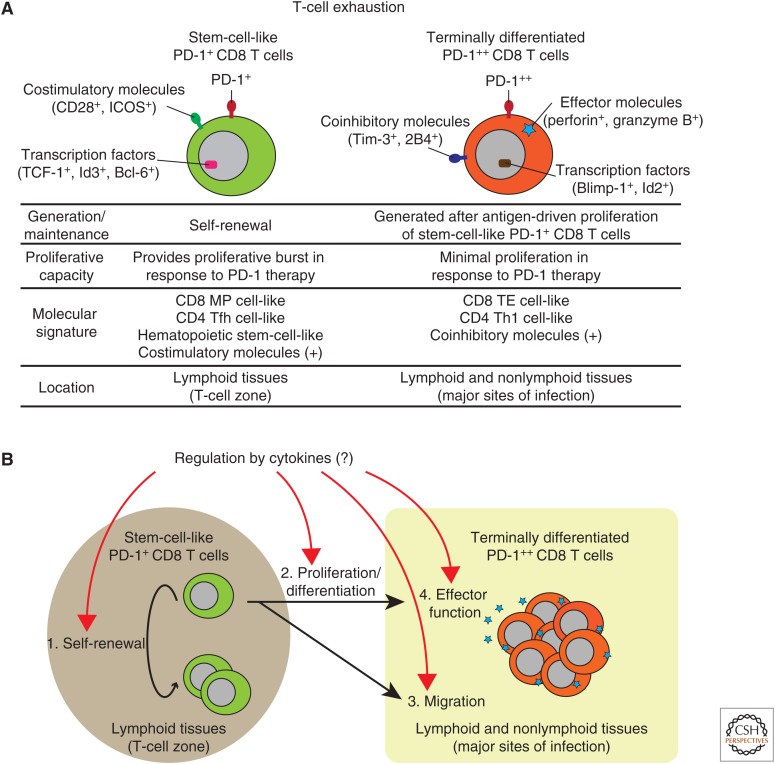Figure 3.
Composition of antiviral CD8 T cells during chronic infections and potential regulation by cytokines. (A) Two programmed cell death (PD)-1-expressing CD8 T-cell subsets in T-cell exhaustion and their biological characteristics/functions. Two (stem-cell-like and terminally differentiated) CD8 T-cell subsets are distinct from each other in terms of generation/maintenance, proliferative capacity, molecular signature, and location. (B) Potential regulation of antiviral CD8 T cells by cytokines during chronic infections. Cytokines may regulate two (stem-cell-like and terminally differentiated) CD8 T-cell subsets at four levels: (1) self-renewal of stem-cell-like CD8 T cells, (2) proliferation/differentiation of stem-cell-like CD8 T cells, (3) migration of terminally differentiated CD8 T cells into major sites of infection, and (4) effector function of terminally differentiated CD8 T cells. ICOS, Inducible T-cell costimulator; TCF-1, T-cell factor 1; Id3, inhibitor of DNA binding 3; Bcl-6, B-cell leukemia/lymphoma 6; Tim-3, T-cell immunoglobulin and mucin-domain containing-3; Blimp-1, B-lymphocyte-induced maturation protein; Id2, inhibitor of DNA binding 2; MP, memory precursor; TE, terminal effector; Tfh, T follicular helper; Th1, T helper type I.

